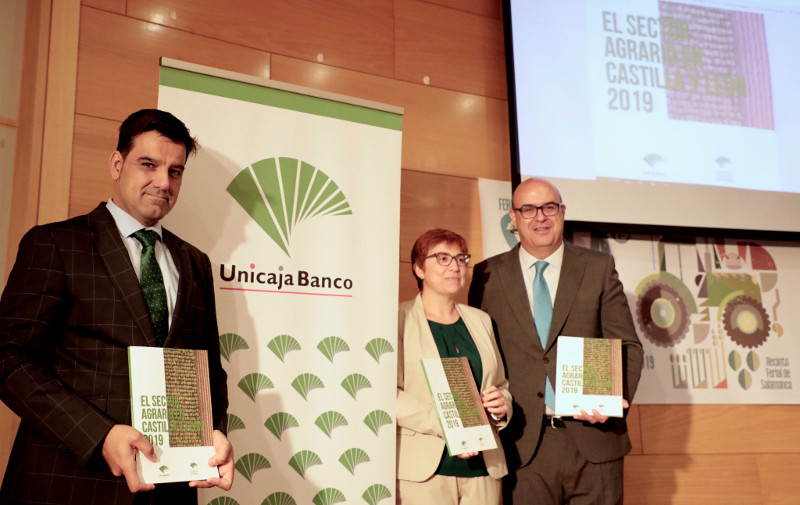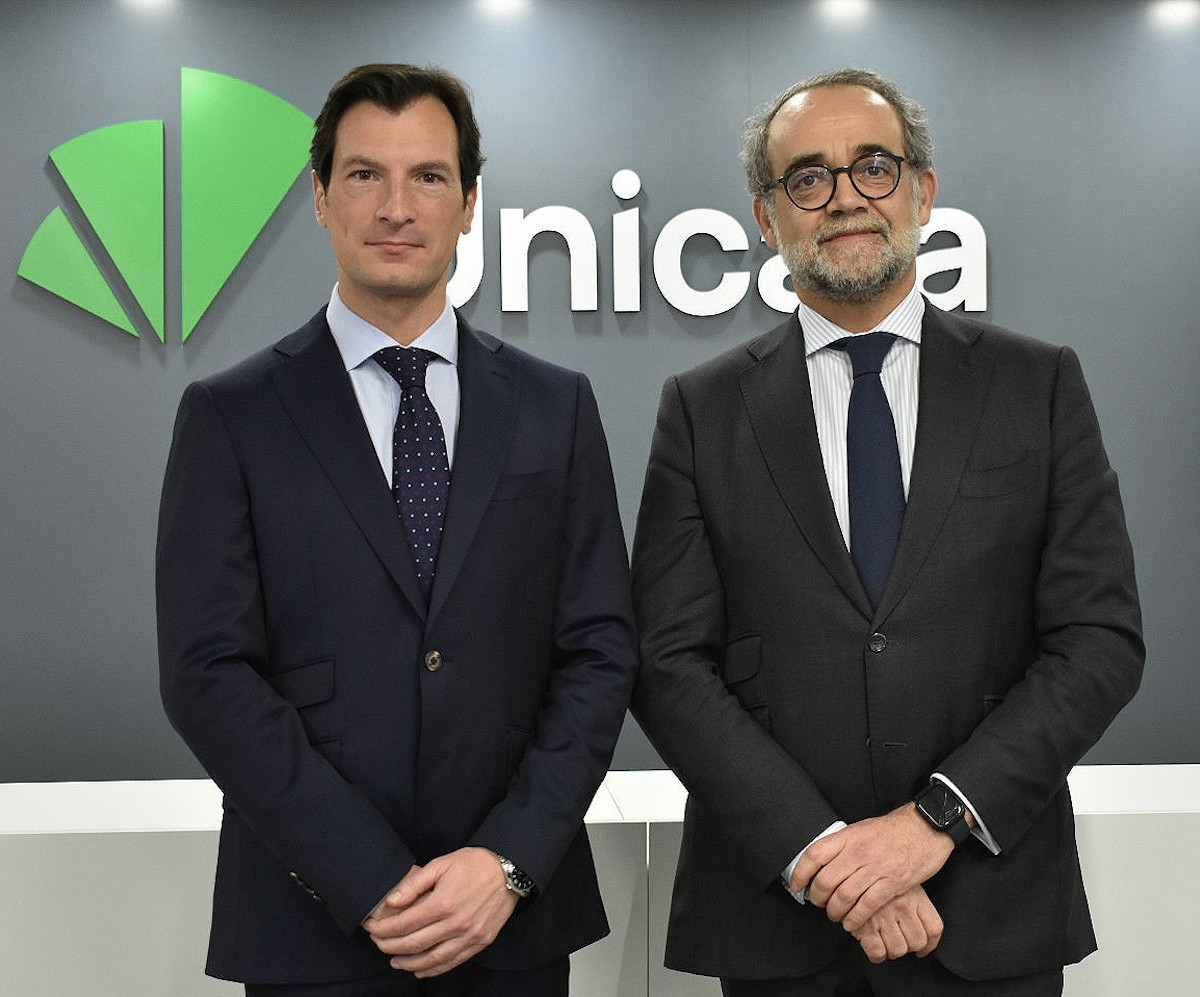The preparation and publication of this report falls within Unicaja Banco’s policy to support the farming and agri-food sector in Castilla y Leon, strategic pillars of its economic structure, due both to its contribution to the generation of wealth and regional employment and to the role they play in the territorial cohesion and balance.
The agri-food sector generates more than 8% of the Gross Value Added of the Autonomous Community and 10% of employment, representing around 13% of the value of exports. Furthermore, rural areas concentrate more than one third of the region’s population.
The estimations of Analistas Económicos de Andalucia indicate that in 2018 the agricultural income grew by 109%, reaching 2,469.1 million euros, accounting for about 8.2% of the national agricultural income.
The value of the agricultural production (crops and livestock) reached to 5,991.1 million euros, up 34.5% with regard to 2017, and represents 11.2% of the national production.
Unicaja Banco has published the ‘Annual Report on the Agricultural Sector in Castilla y Leon’, which reaches its fifth edition. The document has been prepared, as in previous editions, by Analistas Económicos de Andalucía, Grupo Unicaja’s research company, and has been presented today in Salamanca, within the framework of the Feria Salamaq 2019.
The main goal of this report is to provide an analysis of the agricultural and agri-food sector in Castilla y Leon, key pillars of its economic structure, not only because of its contribution to the generation of wealth and employment (representing altogether more than 8% of the regional GVA and 10% of the employment), but also because of the role they play in the territorial cohesion and balance, helping to maintain population in rural areas.
The report is structured as follows: after the prologue and a short introduction, the document is divided into four chapters. The first one focuses on the dimension of the agricultural sector, analyzing, inter alia, the general economic environment, the development of the Common Agricultural Policy (CAP), the evolution of the employment market and the evolution of agricultural productions. The second chapter presents estimations of macroeconomic data in 2018, one of the main contributions of the work, and a detailed analysis is provided on the evolution of the agricultural income in Castilla y Leon and in each province. Chapter 3 is devoted to the agri-food industry in the region, trying to highlight the importance of this industrial branch. Attention is paid to its main figures, such as turnover, employment, business structure and exports of agri-food products. Finally, the report includes a chapter about the main findings and conclusions.
The main results included in the Report, related to 2018 estimations of agricultural income and production, are shown below, as well as the main aspects related to the agri-food industry, foreign trade and consumption and distribution of agri-food products.
Agricultural Income
In 2018, Castilla y leon agricultural income stood at 2,469.1 million euros, up 108.9% with regard to the previous year, according to the estimations of Analistas Econónomicos de Andalucía. This amount represents 8.2% of the Spanish agricultural income.
The number of jobs in the agricultural sector is 2.6% higher than the previous year average, representing nearly 7.6% of the jobs of the agricultural sector in Spain.
As for its provincial distribution, Valladolid continues to be the province with a higher contribution to the regional agricultural income (20.5%), together with Burgos (14.0%), Palencia (13.1%), Zamora (11.8%) and Leon (10.5%). In comparison with 2017, the agricultural income has increased in general, with rises over the regional average in Palencia, Burgos, Valladolid and Soria.
Agricultural Production
The value of the agricultural production (crops and livestock) has reached 5,991.1 million euros in 2018, representing 11.2% of the Spanish production. This amount represents an increase of 34.5% over the previous year, which is explained mainly by an increase in production (33.2%), as prices have risen by 1%.
The increase is due both to the rise in crop production (99.2%) and in livestock production (1.2%), with the former representing 50.4% of the value of the agricultural production in Castilla y Leon. In particular, the value of crop production reached 3,018.5 million euros in 2018, accounting for 9.3% of the national production. With regard to 2017, an increase in production (95.0%) and in prices (2.1%) has been registered.
As per cultivations, cereals are a reference for Castilla y Leon and account for 49.4% of the value of the regional crop production, and 34.9% of the national production. Forage and industrial crops, together with cereals, represent 75% of the value of the total production. With regard to 2017, an increase has been noticed in the production value of nearly all crops, especially -because of their contribution to the regional production- cereals (142.9%) and forage crops (136.8%).
In real terms, the increases in the production of forage crops (157.9%), cereals (134.0%), wine and grape must (95.8%) and fruits (90.4%) should be remarked.
By provinces, Valladolid represents 22.0% of the value of the vegetal production in Castilla y Leon, followed by Burgos (18.9%), Palencia (13.7%) and Leon (12.5%). The production value has grown in all the provinces, with rates higher than 60%, exceeding the regional average in Palencia and Valladolid.
With regard to livestock production, its value has reached 2,972.6 million euros (15.5% of the national production), growing by 1.2% in comparison with the previous year. This increase is due, mainly, to the rise in productions (1.4%), especially in cattle and pigs, whereas prices fell by 0.2%.
As for the provincial distribution, Salamanca (18.3%) and Segovia (18.1%) are those which make a higher contribution to the value of the livestock production in Castilla y Leon, with contributions slightly over 10% in the provinces of Valladolid (13.7%), Zamora (11.2%) and Leon (10.4%). In 2018, the value of the production has increased in seven of the nine provinces (all but Avila and Segovia), with rises over the regional average in Burgos (4.9%), Zamora (3.1%), Valladolid (2.4%) and Soria (2.0%).
Agri-food Industry
Food and drinks industry is one of the most significant activities of the secondary sector in Castilla y Leon, providing 26.1% of the turnover of the regional industry and 28.6% of employment (around 10,135 million euros and 36,500 workers).
Disaggregation by sectors shows that meet industry concentrates 25.1% of the total turnover of the agri-food sector, followed by dairy products (15.3%), animal feeding products (13.7%) and bread and pastry (13.5%). It is worth highlighting that the industry of dairy products contributes to the national aggregate with 16.8% of the turnover, and bread and pastry accounts for 16.1% of the turnover of all the Autonomous Communities.
As per the productive fabric of the food and drinks industry, as at 1 January 2018, there were in Castilla y Leon 3,152 companies, 6.8% more than in the previous year (8,0% in Spain). This involves the first increase since 2009. These companies represent 32.8% of the total in the regional manufacturing industry (18.8% in Spain), as well as 10.1% of the companies of the sector in Spain, a percentage higher than that of the industrial aggregate (5.8%) or the whole regional productive fabric (4.9%).
Considering size, micro-companies (with no employees or with less than 10 employees) represent 82.1% of food and drinks companies, a percentage that rises to 96.1% in the aggregate of the regional productive fabric. Medium companies (50-200 employees) and large companies (more than 50 employees) account for 3.1% of the total in the food industry (0.5% in the total of companies). In comparison with the previous year, medium-sized companies and micro-companies have been those with the highest growth rates, over 10%.
As per activity areas, manufacturing of bread, bakery and pastry products is the one with a higher number of companies (34.4% of the sector), followed by meat industry (25.1%) and by drink manufacture (22.0%). In 2018, the rise in the number of companies has been general, at rates ranging from 3.8% in dairy companies to 18.2% in activities of fish processing and canning.
By provinces, Salamanca gathers 19.4% of the companies in the food and drinks industry in Castilla y Leon (3,793 as of 1 January 2018), followed by Leon (17.7%) and Valladolid (16.7%).
Agri-food trade balance
The agri-food trade balance (agricultural sector and food industry) registered in 2018 a positive balance of 789.2 million euros, 15.2% higher than in 2017. The value of exports amounted to 1,964.5 million euros, representing a 6.2% rise year-on-year. This amount accounts for 12.9% of the total value exported by the region, as well as for 4.3% of the Spanish exports. Imports increased by 0.9%.
The main products exported by Castilla y Leon (with a value exceeding 100 million euros in 2018) have been pork meet, bread and pastry, wine, extracts and essences, beef meet and cheeses.
76.4% of agri-food exports in Andalusia are sent to the European Union, mainly Portugal (24.5% of the total), France (12.6%) and Italy (9.2%).
By provinces, Burgos (21.8%), Valladolid (18.5%), Palencia (17.5%), Salamanca (13.2%) and Leon (12.9%) gather more than 80% of the value exported by Castilla y Leon.
Food consumption and distribution
In 2018, the total household expenditure in food in Castilla y Leon reached 3,710.3 million euros, a year-on-year 2.6% decrease (1.6% in Spain), due to a 4.8% fall in consumption (-0.2% in Spain).
The foods which are most consumed in Castilla y Leon are fresh and liquid milk (15.9% and 15.4%, respectively, of the total amount of foods), followed by meat (8.5%), fresh vegetables (8.2%), bottled water (7.5%) and bread (5.8%).
Download informe "El sector agrario en Castilla y León 2019".



